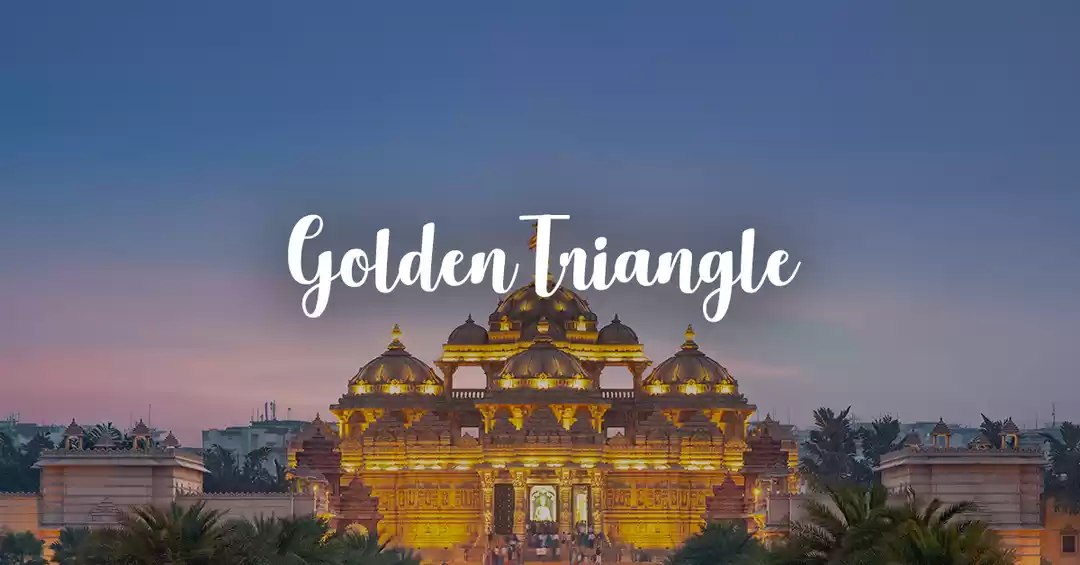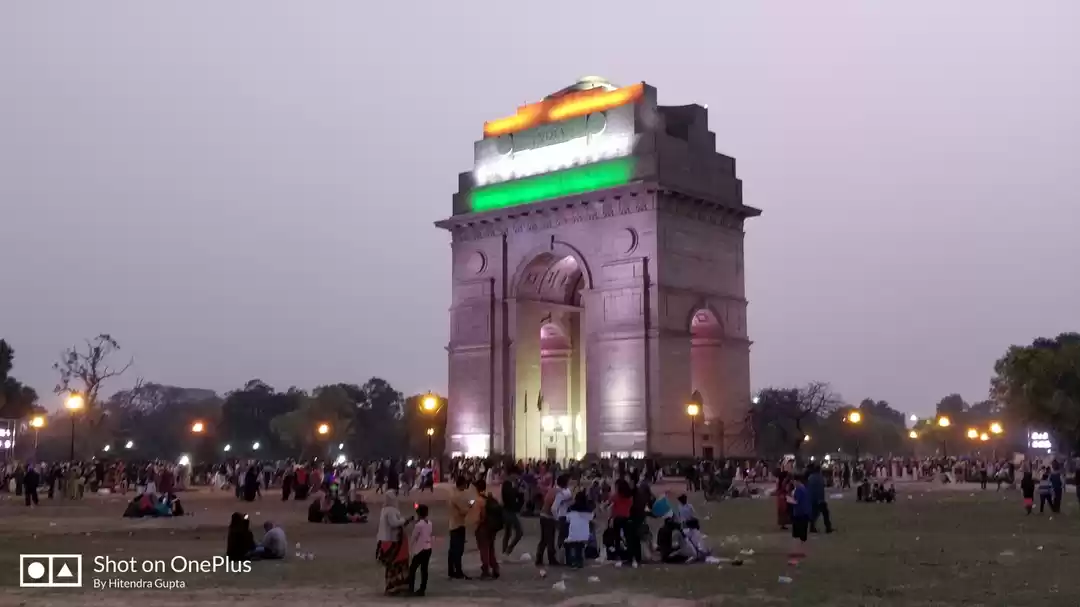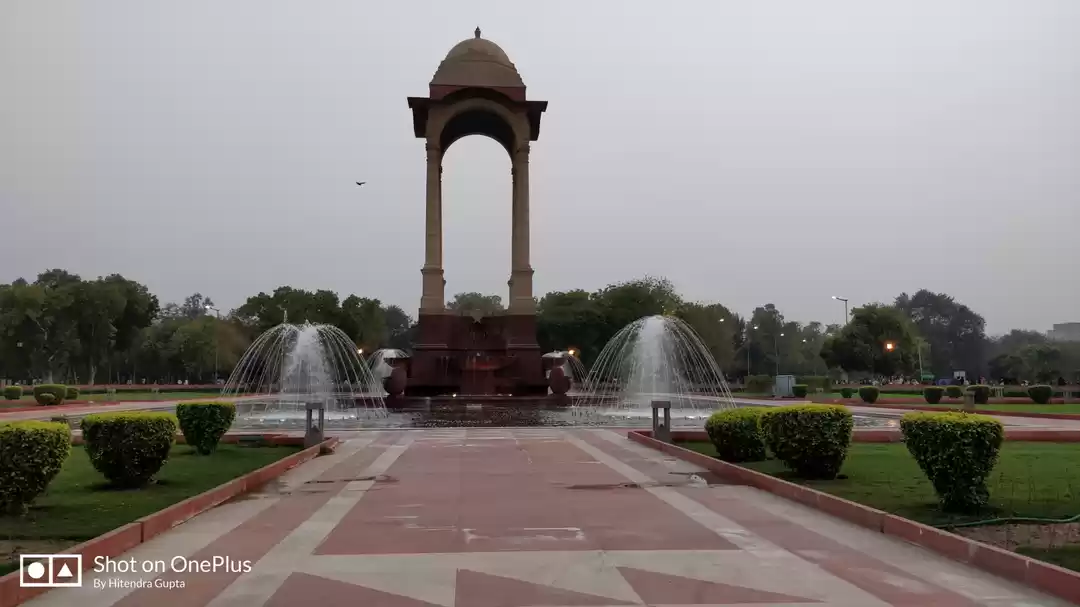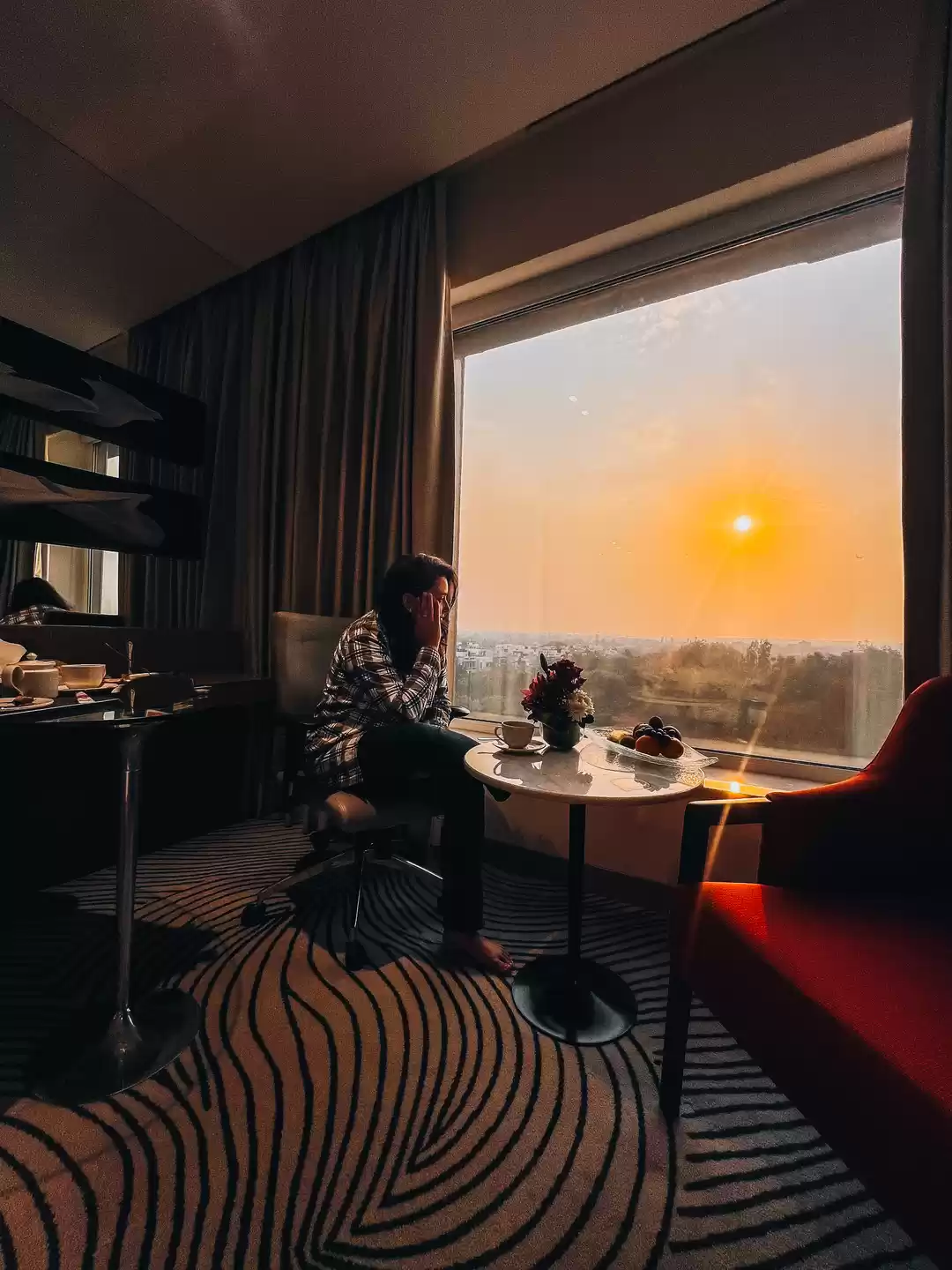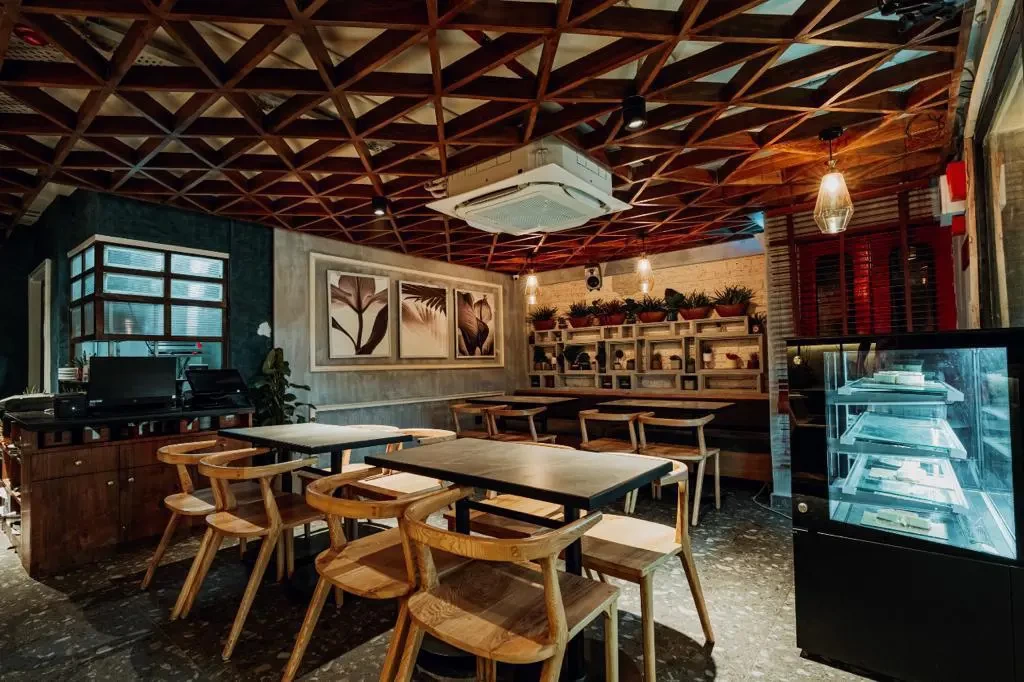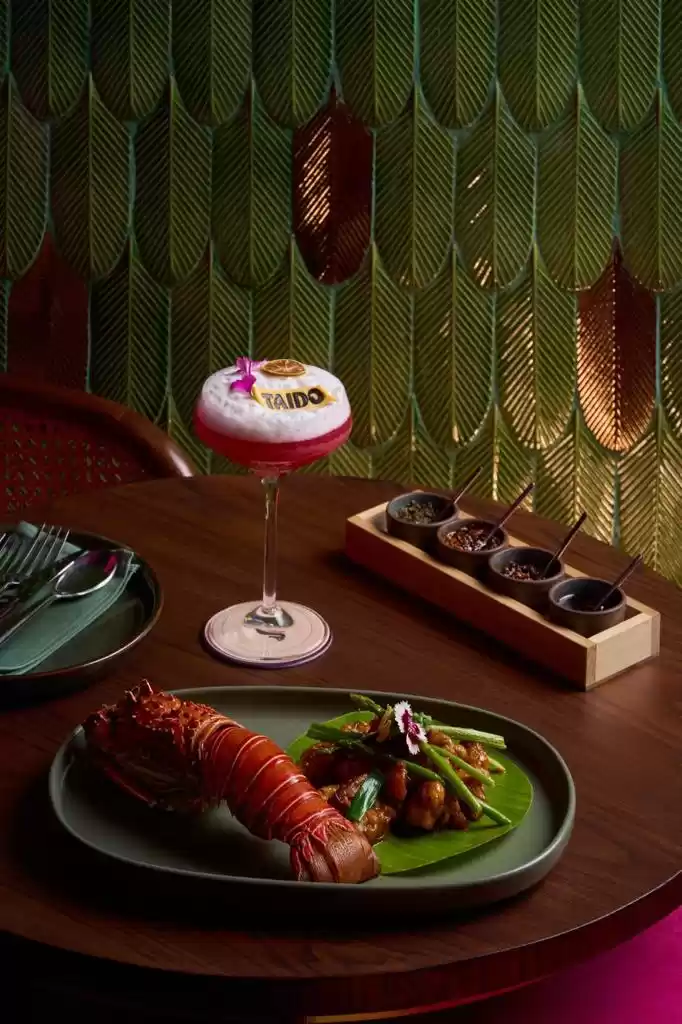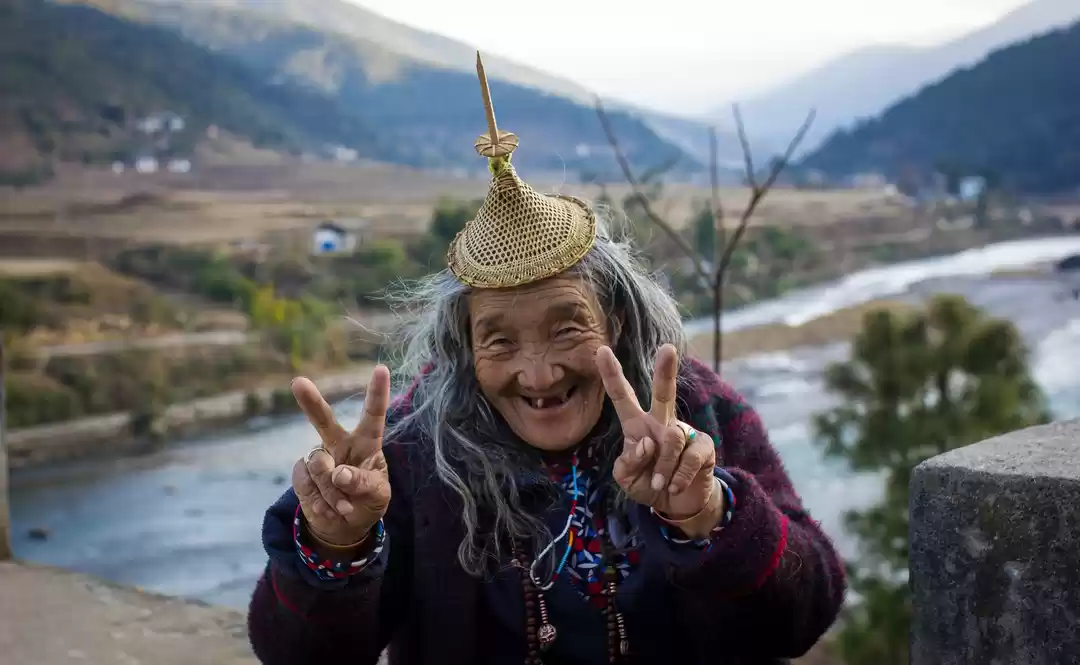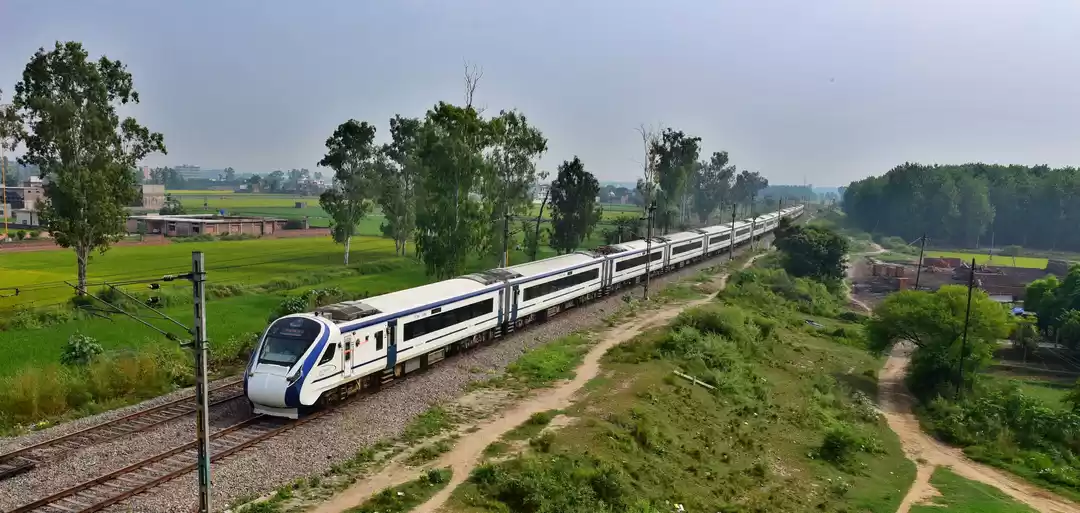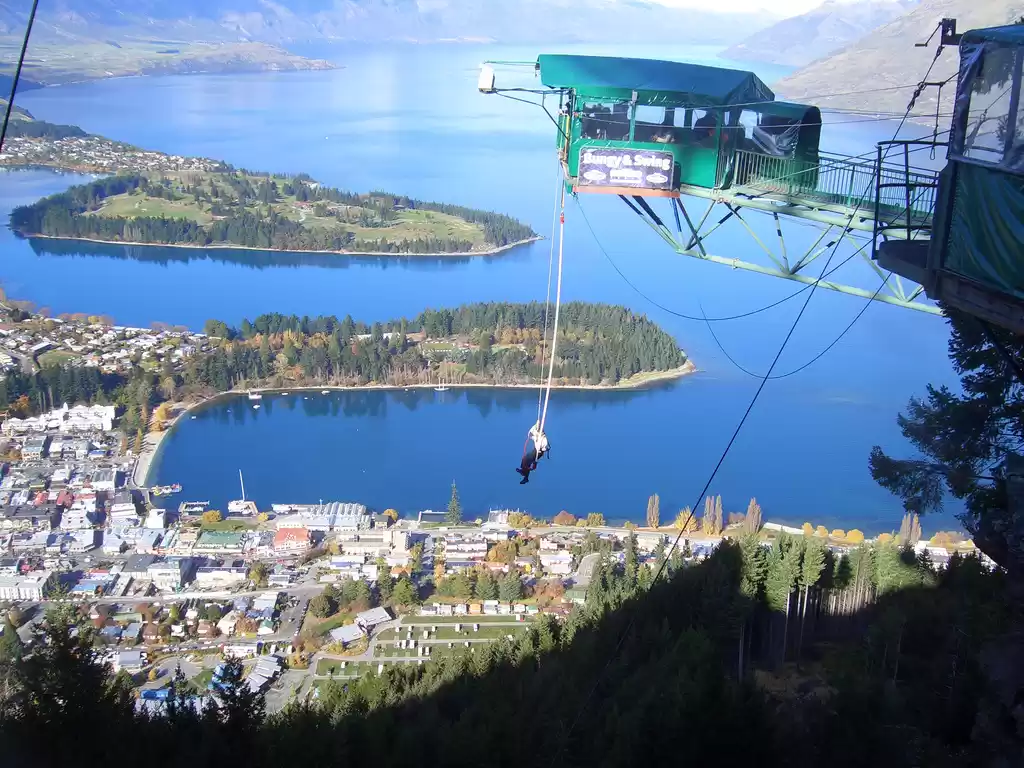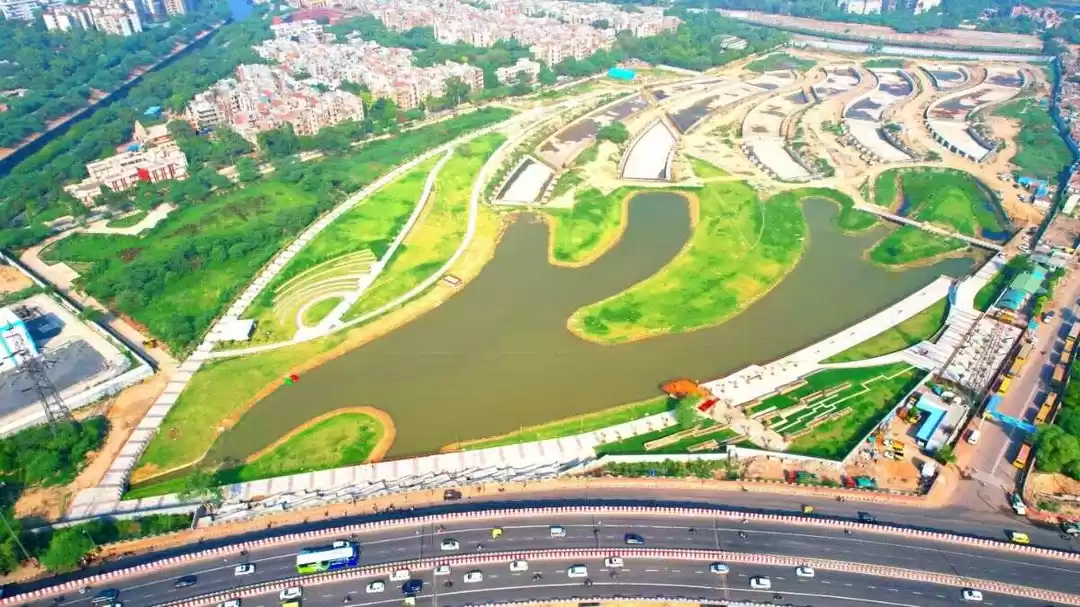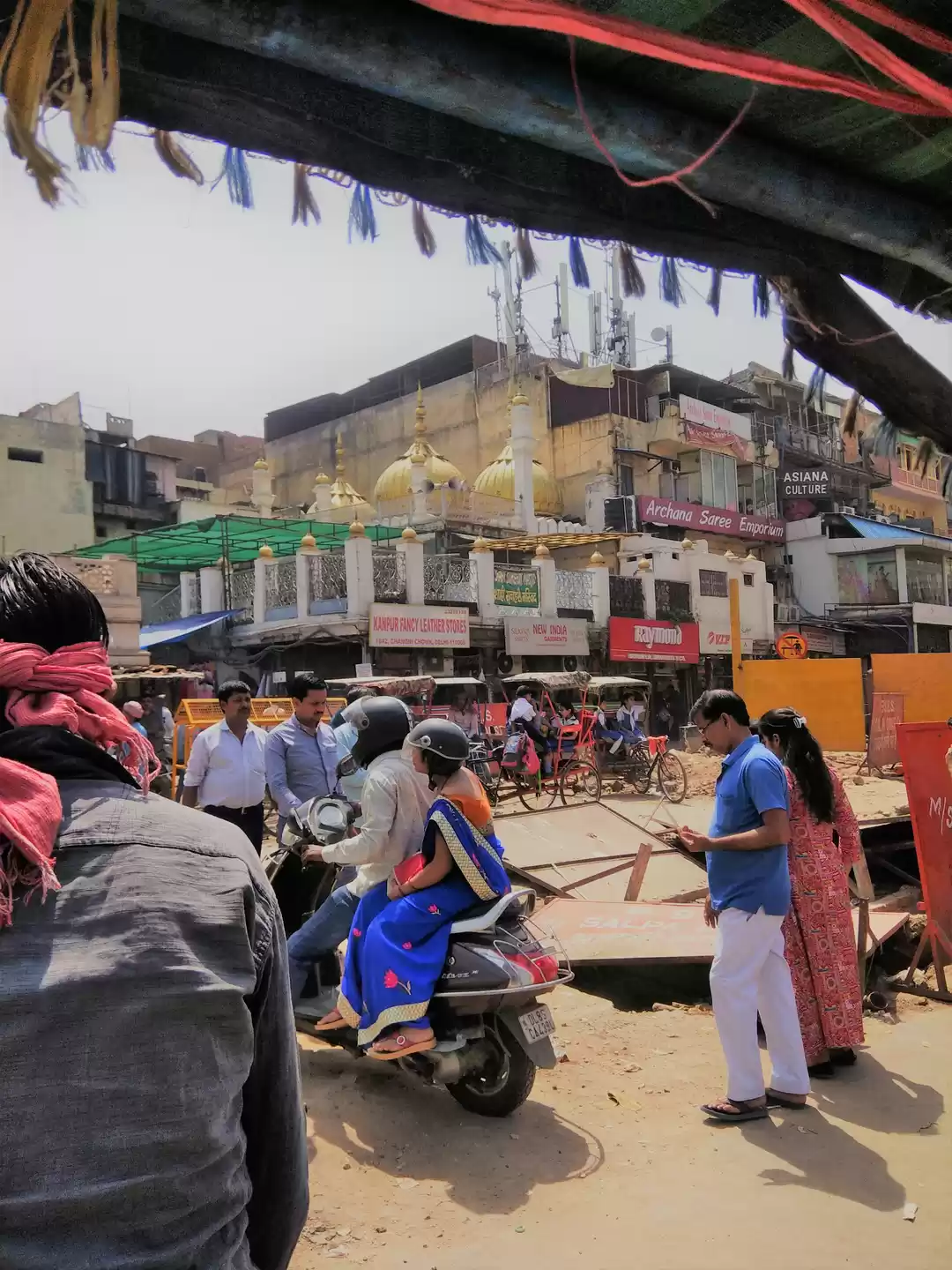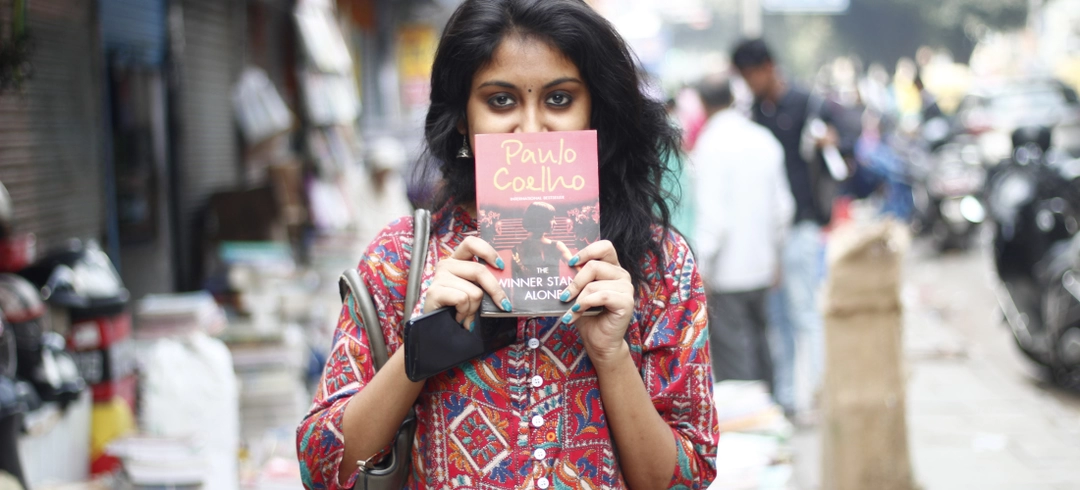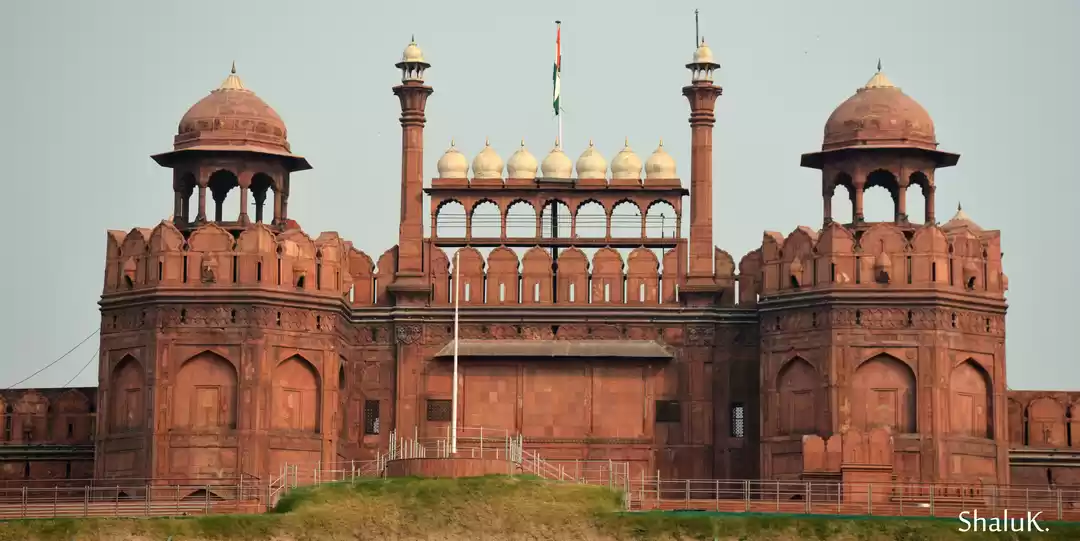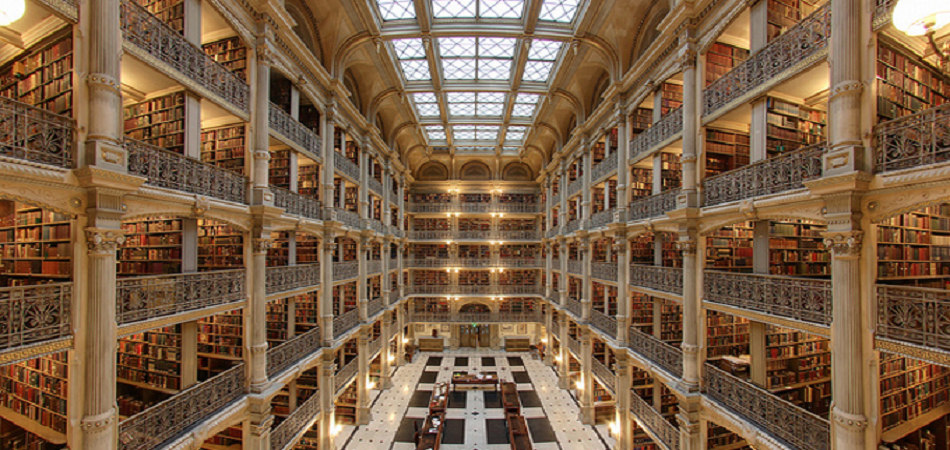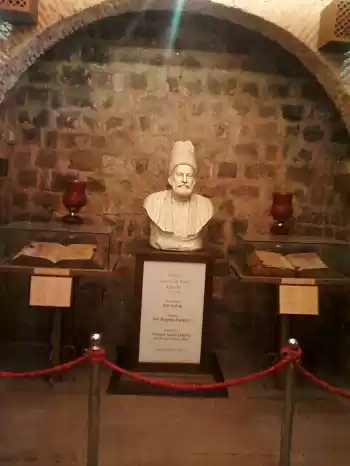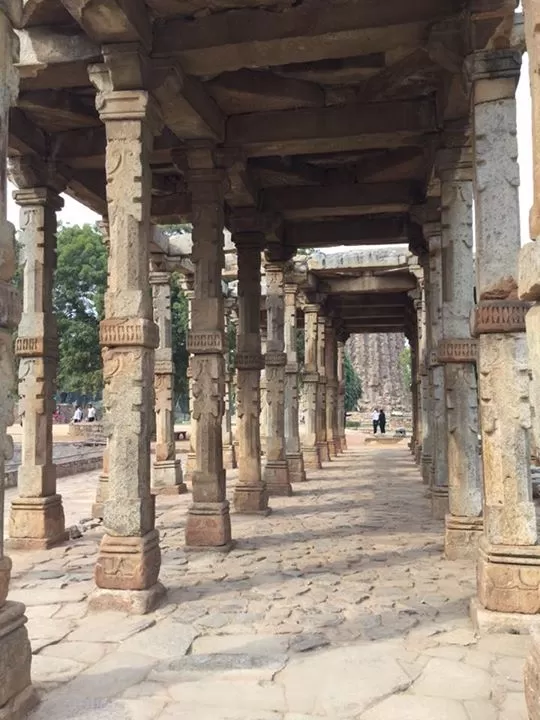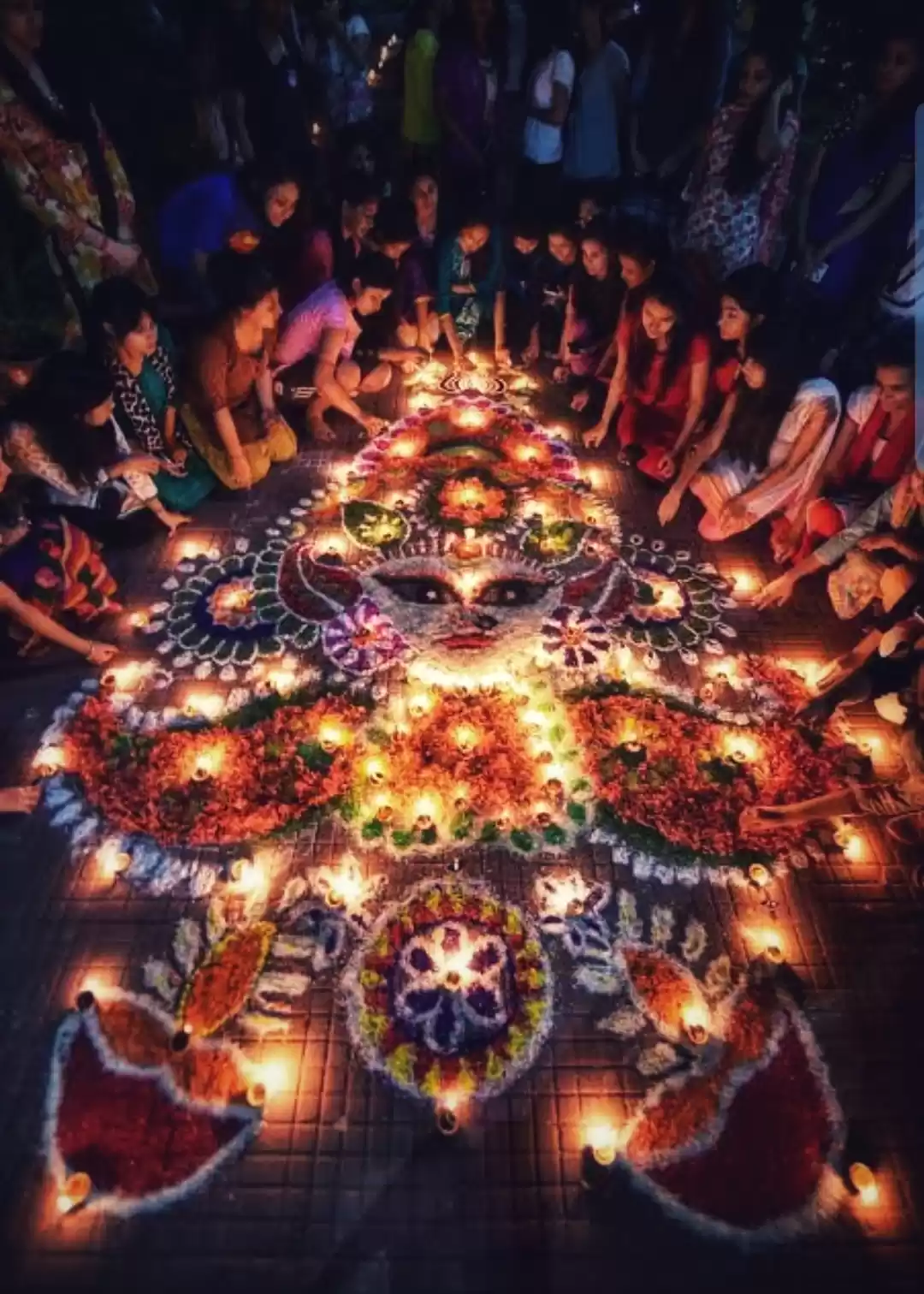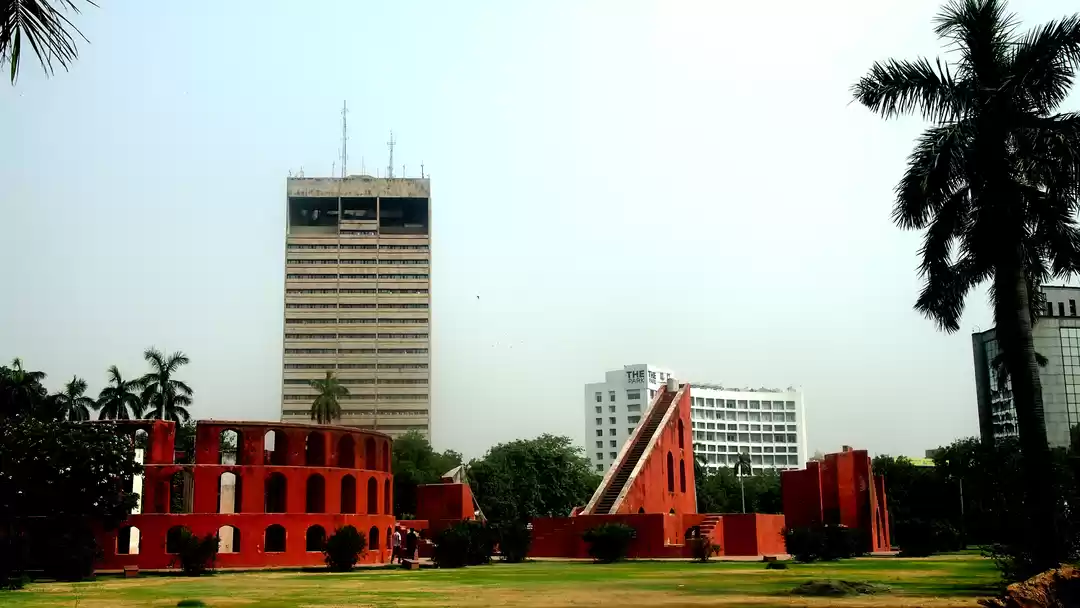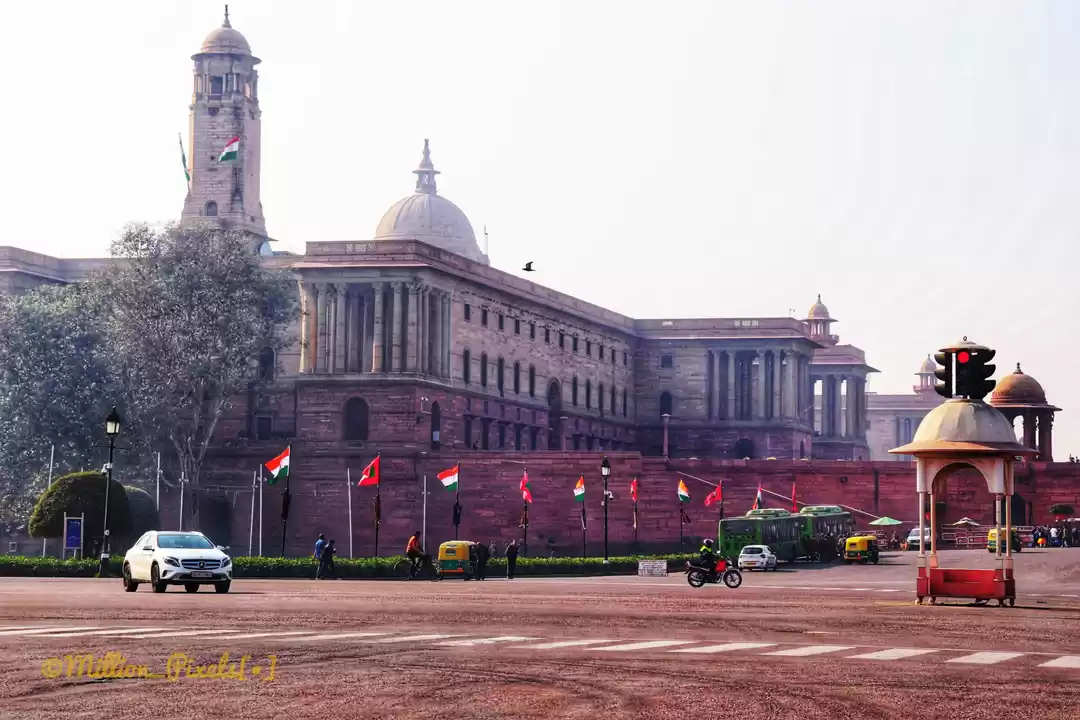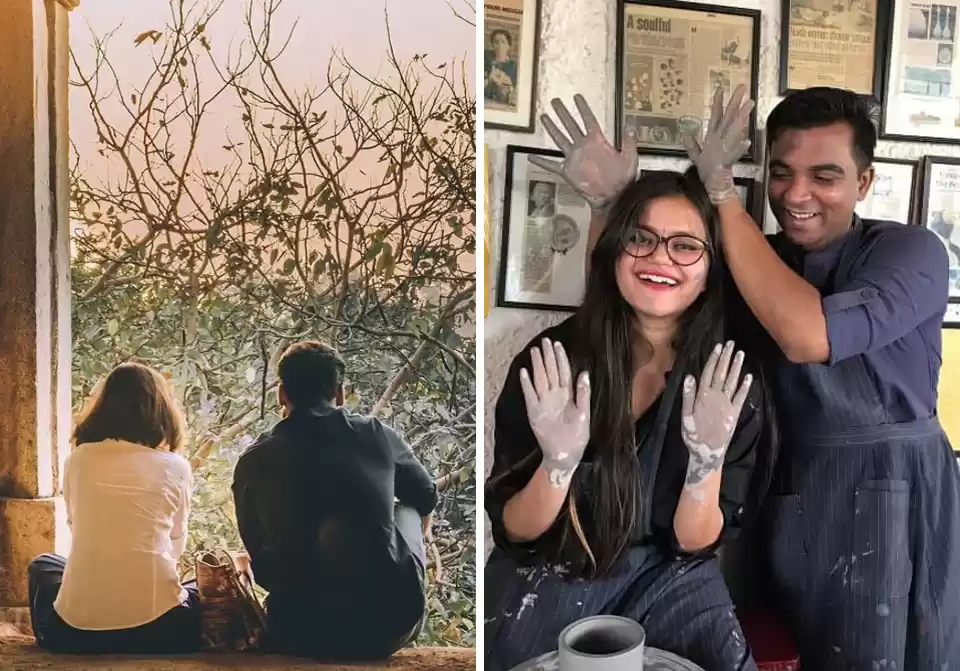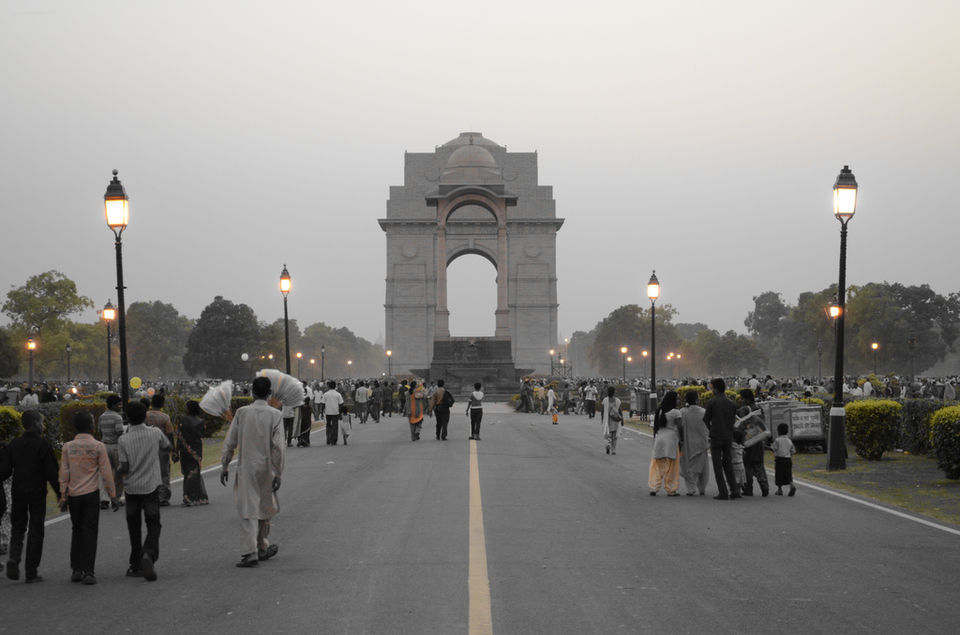
Delhi, the capital of India today, has been the centre of numerous empires since the 4th century BCE. That has resulted in a melting pot of various cultures that manifest in Delhi’s art, architecture, language, tradition, and even the planning of the city itself. It must be a part of your India itinerary, and while 2 days are just not enough to explore this vast city (in terms of sheer area, and number of things to do); if you’re under time constraints – this is the guide for you!
Getting in and around
India’s busiest airport, the Indira Gandhi International Airport, is located in and serves Delhi and the greater National Capital Region. The airport handles more than 65 domestic and international airlines, connecting the city and country to the rest of the world. To get to the city from the airport, you can use the Delhi Airport Metro Express line of the Delhi Metro that takes 20 minutes and costs Rs. 60 to the centre of the city, and is operational between 4:45 am and 11:30 pm. There are also a number of busses available 24-hours a day. You can also book a prepaid taxi from the booth outside the airport, the fare of which would never be more than Rs. 500-600. Uber is also operational in the city. Delhi is also extremely well-connected to the rest of the country via bus and rail networks. The main railway stations are Delhi junction, New Delhi station, Hazrat Nizamuddin station, and Anand Vihar Terminal.
The best way to get around Delhi is by using the Delhi Metro, which is cheap and well-connected to most of the city, although getting crowded during rush hour. Fares range between Rs. 10 and 60. The bus network is also fairly useful, although buses can get very crowded and bus routes are not well-marked. The government-run DTC buses (red buses are air-conditioned, green buses are not) are your best bet. Tickets are between Rs. 5 and 15. Taxis in Delhi are not the best option for transport, owing to the city’s traffic congestion. Further, the meters are often not used or rigged, and fares must be agreed upon in advance. Conversely, auto-rickshaws are better suited for shorter distances, even though fares must be negotiated here as well. Shorter trips don’t cost more than Rs. 40, and the upper limit for any trip with in the city limits is Rs. 200.
Accommodation
Budget: Hotel Amax Inn, Hotel Emperor Palms, goStops Delhi (Stops Hostel Delhi)
Mid-range: Grand Godwin Hotel, bloomrooms @ New Delhi Railway Station, La Sagrita
Luxury: Shangri-La's Eros Hotel, WelcomHeritage Haveli Dharampura, Taj Mahal Hotel, Taj Palace, The Oberoi, ITC Maurya
Ease into Delhi by beginning your trip at a place less Delhi Sultanate, more British Raj. Completed in 1933, the concentrically circular Connaught Place is one of the largest commercial centres of the city. To get here, take the metro to Rajiv Chowk (which happens to be one of the busiest stops on the line). A nice place to stroll around and take a look at ever-changing shop fronts, restaurants, cafés, and street food vendors.
Step inside this palatial restaurant in Connaught Place to enjoy breakfast like royalty. With the smell of strong coffee and freshly baked bread in the air, there’s no better place for your first meal of the day. This heritage eatery serves up an assortment of egg preparations, English breakfast options, a multitude of sandwiches, hors d'oeuvres, Indian breakfast items, and organic coffee blends. UCH opens its doors at 9:30 every morning, and a breakfast for two here should cost you about Rs. 1000.
Walk 10-minutes southward from UCH, and you should reach Jantar Mantar. This is an observatory with 13 huge astronomy instruments that were built in the form of huge structures under the guidance of the Maharaja of Jaipur. It is a truly fascinating place to explore the ancient forms of astronomy, and the marvellous instruments are a sight to behold by themselves. Jantar Mantar is open to the public from 10:00am to 6:00pm every day, with an entry fee of Rs. 15 for Indians and Rs. 200 for foreign tourists.
An ancient step-well believed to have been built in times of the Mahabharata, you will find very few places in the world like this one. It is a 10-minute rickshaw ride from Jantar Mantar, which will cost you approximately Rs. 30. As soon as you get here, you will feel something different in the air. Then again, that might also be the presence from another realm as this place has been deemed haunted by many accounts! Paranormal activity aside, it is a beautiful red-stone structure with three levels and 108 steps going downward in total.
You can take an auto-rickshaw to this place (20-minutes, Rs. 50). Or, walk 10 minutes to Janpath metro station and take the Violet Line towards Kashmere Gate (Rs. 30 per ticket). Ride it 4 stops to Jama Masjid, after which a 7-minute walk should get you to Karim’s; your lunch stop for this afternoon. Tucked into the by-lanes near Jama Masjid, following Maps and asking for directions are your best bets of getting here. Considered to be the best Mughlai restaurant in town, Karim’s has had its doors open for nearly a century! Delicacies that cannot be missed are the mutton burra, raan, seekh kebab, mutton korma, tandoori chicken, rolls, biryani, and khamiri roti. Don’t forget to leave space for the sinful shahi tukda and kheer benazeer for dessert. Open from 9:00am to 12:30am, a meal for two here shouldn’t cost you more than Rs. 1000.
A 15-minute walk from Karim’s, and you should be standing in front of the formidable Red Fort. As you go through its gates of striking red sandstone, you will find yourself in a passage housing a medieval-style bazaar. As you move further in, myriad of structures await your exploration. This is because the Red Fort was the main residence of the Mughal royals for nearly 200 years.
Structures like the Diwan-i-Aam, Diwan-i-Khas, Mumtaz Mahal, Rang Mahal, Moti Masjid, and imperial baths, step-wells and manicured gardens will enchant and transport you to times of the Mughal Dynasty, with their stunning ornamented ceilings, windows, balconies, and bejewelled columns. It is open to public from 7:00am to 5:30pm, every day but Mondays, with an entry fee of Rs. 35 for Indian visitors and Rs. 550 for international visitors.
The great mosque of the Mughal empire, Jama Masjid, is just a 10-minute walk from the Red Fort. Built by Mughal Emperor Shah Jahan, it is one of the largest mosques in India. The mosque is shut between noon and 1:30pm. The best time to visit it would be before sunset, during golden hour, to get some stunning shots of this grand structure of red sandstone and marble. The fee for photography is Rs. 300.
Once the sun starts to set and dusk falls over the city, begin walking through the lanes of Chandni Chowk – and be prepared for a sensory overload. There’s no point trying to specifically map out a way through these serpentine streets, so the best way to experience Chandni Chowk is to just wander. However, make sure to experience the following; purchase some pretty trinkets, jewellery and fragrant attar/ittar from Dariba Kalan, walk through the aromatic Khari Baoli road which is famous for its spice, dry fruits and herbs, find some wedding wear and accessories, and keep an eye out for beautiful havelis (historic mansions) that dot the streets of Chandni Chowk.
Once you’re done meandering through the markets, make your way to the famous Paranthe Wali Gali, in Chandni Chowk itself. Before you enter the street, however, make sure to try some zingy chaat at Natraj Dhai Bhalla Corner on the main Chandni Chowk Road. Once you’re in the Gali, there are a number of joints to taste various preparations of the humble paratha. Famous ones are Pt. Gaya Prashad Shiv Charan (nearly 150 years old) and Pt. Kanhaiyalal Durga Prashad Dixit Parawthe Wala. These are nearly adjacent to one another, hence competitors; but that just means more to taste! The kulhad lassi from Sharma Bhojnalaya is heavenly, as are the kachoris are Jung Bahadur Kachori Wala. Chandni Chowk is famous for its chaat, in general, so don’t forget to try the multitude of varieties. Your food trail through Chandni Chowk marks the end of the first day of your Delhi adventure!
Head to the Paharganj area of Delhi for a typical North Indian breakfast at Sita Ram Diwan Chand. It wouldn’t be an exaggeration to say that this is the best chole bhature you’re going to get in the whole city. With soft, golden bhature and the chole being perfectly spiced (yet not too spicy for a breakfast); this place will take you to foodie heaven. And make sure to have a glass of cold, sweet lassi to top it all off. Opening its doors at 8:00am every morning, this mouth-watering breakfast of chole bhature and lassi will only cost you Rs. 200 for two!
Make your way to the east end of Rajpath (Rs. 60 by auto-rickshaw), where the India Gate stands tall and proud. A memorial to the soldiers of the British-Indian Army who died in the First World War, the India Gate is an iconic triumphal arch that is 138 feet in height. Under the India Gate is also another memorial known as the Amar Jawan Jyoti that was constructed to commemorate the soldiers of the 1971 Indo-Pakistani War. It is a very humbling experience to be in the presence of such a structure, and to read about its history and significance.
A rickshaw ride costing Rs. 30 should get you to the other end of Rajpath, where the Rashtrapati Bhavan is located. This majestic building is the official residence of the President of India, and comprises of hundreds of rooms, all sitting on an estate of 330 acres with sprawling gardens. There are guided tours that are divided into three circuits, but Circuit 1 is the most recommended. Circuit 1 gives you an inside look at the Central Lawn and Main Building of the Rashtrapati Bhavan, that includes the various banquet halls, drawing rooms, and libraries. The guided tour takes place on Thursdays, Fridays, Saturdays and Sundays, for a nominal fee of Rs. 50. It is advisable to book online and pay via credit/debit card, and to carry your photo ID (Aadhar Card suggested for Indians, Passport with photocopy of the same for foreign visitors). You can choose a slot every hour from 9:30am to 3:30pm.
A 10-minute walk will take you to the Central Secretariat metro station, from where you take the metro going towards Shalimar Huda City Centre, getting off at Saket metro station (Rs. 30 per ticket). A short rickshaw ride (Rs. 21) and you should be outside the Qutub complex; a collection of beautiful monuments and edifices predominantly from the era of the Delhi Sultanate, as well as subsequent periods. Some of the main structures are: the Qutub Minar – a stunningly constructed 239-foot minaret of sandstone and marble that is the tallest brick minaret in the world, ruins of the intricately designed Quwwat-ul-Islam Mosque – the first mosque built in Delhi during the period of the Sultanate, the Iron pillar of Delhi – a metal victory column originally dedicated to Lord Vishnu in the 3rd or 4th century that has stood the test of time lacking any corrosion, the Tomb of Iltutmish – a gorgeously engraved structure of red stone that is the tomb of the second Sultan of Delhi, and the tomb of Ala-ud-din Khalji. You can easily spend an hour or two marvelling at these beautiful creations that were built through the eras of Delhi. The complex is open to visitors from sunrise to sunset (roughly 7:00am to 5:00pm) every day, with an entry fee of Rs. 30 for Indians and Rs. 500 for international tourists.
15 minutes away by road (Rs. 50 by rickshaw), is Hauz Khas Village; once a historic habitation of the Delhi Sultanate, now a fun neighbourhood of narrow lanes filled to the brim with hip restaurants, cafés, pubs, bars, boutiques and street shopping. A great place to be to wile away your time, and to see a medley of the old and new Delhi.
Located in the Village itself, is this popular café that is also used as a work-space. Spread across multiple levels, you can choose the ambience you’d like – a pub, bar, restaurant, rooftop, or even a club (post 6:30pm). The most recommended level to dine at is the rooftop or chhat level, that incorporates Indian style seating, and also has some beautiful views of the surrounding Deer Park and lake. Only Indian cuisine (with some nice twists) is served on the rooftop level, whereas the other venues serve international cuisine too. It is advised to try calling in advance to let them know you’re coming, as this place can get packed! A meal here should set you back about Rs. 1300 for two.
After your meal, a nice 15-minute walk through the forested park should get you to I.I.T. metro station, from where you can take a metro heading towards the Botanical Garden, and get off at the Okhla NSIC station (Rs. 30 per ticket, 7 stops). Another 7-minute walk will get you to the Lotus Temple. A Bahá'í House of Worship, it is open to all visitors regardless of their faith. A serene place where you can feel a spiritual energy, you can pray in any way that adheres to your own religion. What brings most people to the temple, however, is its structure that was built to represent a lotus. It is truly a sight to behold as its white marble glistens in the sun. There is no fee to enter the Lotus Temple, and it is open to visitors from 9:00am to 5:30pm every day but Monday.
Take an auto-rickshaw to reach the ticket counter of Humayun’s Tomb, which would take you about 30 minutes and Rs. 60. The main attraction is the simply breath-taking tomb of the second emperor of the Mughal Empire; Humayun. It’s a quintessential display Mughal architecture, with magnificent domes, arches, canopies, jaalis and other ornamental designs. It is located at the centre of four meticulously designed Persian-style gardens with water elements and greenery, the first of its kind in India. There are a number of other monuments – tombs and mosques, located in the enclosure that should be visited as well. Humayun’s Tomb is open to visitors from 6:00am to 6:00pm every day, with an entry fee of Rs. 30 for Indians and Rs. 500 for foreign tourists.
A short, Rs. 25 auto-rickshaw journey will drop you at the entry point to one of the oldest forts in Delhi – the Purana Qila. While it may be mostly in ruins, it is not hard to imagine the formidability it once possessed, and the ruins also add to its charm and ancientness.
The highlight of your visit here is the sound and light show ‘Ishq-e-Dilli’ that narrates the story of the city of Delhi from ancient to modern. The hour-long show takes place in the late evening (at varying times depending on the month of the year, starting between 7:30 and 9:00pm) every day but Friday. Tickets cost Rs. 100 for adults and Rs. 50 for children, and can be booked online or at the counter at the fort one hour before the show starts. Make sure to carry a good amount of mosquito repellent for the show! The Purana Qila itself is open every day from 7:00am to 5:00pm, with an entry fee of Rs. 20 for Indians and Rs. 200 for foreign visitors.
The last stop for the night is the open-air village-style bazaar and food plaza Dilli Haat, that is a 30-minute (and Rs. 80) auto-rickshaw ride from the Purana Qila. As soon as you enter the market, you will feel the festivity of rural India. This place marks a fitting end to your Delhi journey, as it celebrates the essence of the country – as the capital of a country should. Treat yourself to shopping from craftsmen that travel from all across the country to put up their wares for sale such as traditional garments, footwear, fabric, jewellery, handicrafts, artwork, home décor, pottery, wood carvings, metal ornaments, and so much more. You also get to taste the local cuisine of various states of India from the number of food stalls to choose from. Dilli Haat is open every day from 11:00am to 9:00pm, with at entry fee of Rs. 20 for adults and Rs. 10 for children.
The capital of India is just as eclectic as the country itself. The city pays respect to the glimpses of its past, which results in a harmonious balance between the old and the new. So, journey to Delhi for an experience like no other.
Frequent Searches Leading To This Page:-
1 day itinerary of delhi, 2 days trip in delhi, perfect itineraries of delhi, 2 days trip near Delhi, Best Places to Visit Near Delhi for 2 days






